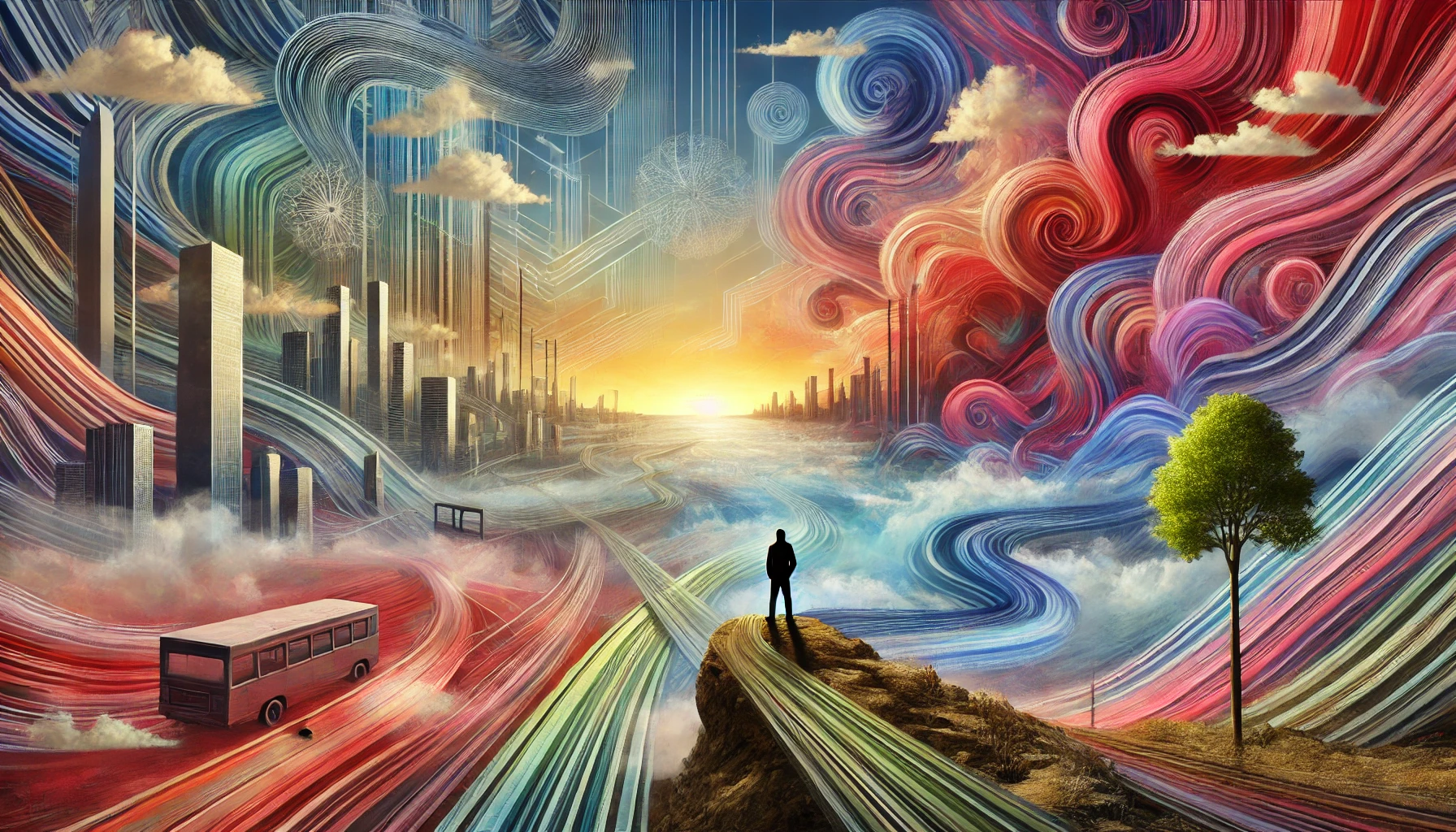Homo Margo Metaphor: Understanding Human Boundaries
 Homo Margo Metaphor: Understanding Human Boundaries
Homo Margo Metaphor: Understanding Human Boundaries
The homo margo metaphor serves as a lens through which the complexities of human boundaries, transitions, and existence are examined. Rooted in philosophical and literary discourse, it encapsulates the idea of individuals existing at the margins of societal structures, pushing limits and exploring new frontiers. While this concept may seem abstract, its implications resonate in fields as varied as psychology, anthropology, and art. By delving deeper, the profound relevance of this metaphor in modern life can be appreciated.
What Is the Homo Margo Metaphor?
The homo margo metaphor describes the human experience of living on the edge of change. The word “margo” translates to “margin” or “edge” in Latin, symbolizing a threshold where transformation begins. In literature and philosophy, it signifies the liminal space where individuals or groups confront uncertainty, redefine identity, and challenge norms. Essentially, it encapsulates a state of being neither fully here nor there but instead in a space of constant flux and potential.
Historical Origins of the Homo Margo Metaphor
This metaphor’s roots can be traced to ancient texts and traditions that emphasize boundaries. Philosophers like Aristotle and Socrates explored the idea of transitional spaces in human life. Later, modern thinkers such as Victor Turner and Mary Douglas refined these ideas, highlighting the importance of marginal spaces in cultural rituals. The homo margo metaphor emerged as a synthesis of these ideas, representing the universal human condition of navigating life’s boundaries.
Significance in Modern Thought
The metaphor is not just a philosophical concept; it applies to everyday life. In a rapidly changing world, people constantly face situations where they must adapt, innovate, or resist. Whether in careers, relationships, or personal growth, individuals often exist in a liminal state, embodying the homo margo metaphor. This concept reminds us that living at the edge of comfort zones can lead to growth and discovery.
Applications in Literature and Art
Writers and artists frequently use the homo margo metaphor to depict characters or narratives grappling with identity crises or societal changes. Novels like Franz Kafka’s The Metamorphosis and Virginia Woolf’s Orlando explore themes of transformation and ambiguity. Similarly, in visual art, boundary and transition are symbolized through blurred lines, surreal imagery, and contrasting elements. This metaphor gives creatives a powerful tool to evoke the universal experience of navigating change.
Role in Cultural Anthropology
Anthropologists study the homo margo metaphor to understand rituals, traditions, and behaviors at cultural margins. For instance, rites of passage such as marriages, funerals, and initiation ceremonies often reflect liminal states. The individuals involved temporarily exist outside normal societal roles, embodying the essence of the metaphor. These transitions reveal the importance of edges in shaping cultural identity and cohesion.
Implications for Personal Growth
Personal development is closely tied to the idea of boundaries and transitions. The homo margo metaphor teaches that stepping into the unknown is not only inevitable but also necessary for growth. People often resist change due to fear of failure or discomfort. However, this metaphor illustrates that the edge is where transformation happens. Embracing uncertainty can unlock new opportunities and lead to a richer life experience.
Influence on Modern Psychology
Psychologists use the metaphor to explain transitional phases in human development, such as adolescence, midlife crises, or retirement. These stages are marked by uncertainty and exploration. The homo margo metaphor provides a framework to understand how individuals cope with these transitions. It emphasizes resilience, adaptability, and the importance of support systems during periods of flux.
Impact on Social Movements
Throughout history, social movements have embodied the homo margo metaphor. Activists, often situated at the margins of society, challenge established norms and advocate for change. The metaphor encapsulates the courage required to exist in this liminal space, paving the way for progress. Examples include the Civil Rights Movement and environmental activism, where individuals pushed boundaries to achieve justice and awareness.
Connections to Existential Philosophy
Existential philosophers like Jean-Paul Sartre and Simone de Beauvoir delve into themes closely aligned with the homo margo metaphor. They explore the tension between freedom and responsibility, individuality and society. This metaphor complements their ideas by symbolizing the edge as a place of existential choice, where individuals confront their true selves and redefine their purpose.
Examples in Popular Culture
Popular media also reflects the homo margo metaphor. Films like The Matrix and Inception explore characters existing between realities, challenging perceptions of truth and identity. These stories resonate because they mirror the human condition, highlighting the courage and curiosity required to navigate the unknown.
The Metaphor in Education
Educational systems incorporate the metaphor when preparing students for life’s transitions. From moving between grade levels to entering the workforce, students are guided through liminal spaces. This approach underscores the importance of resilience and adaptability, qualities central to the homo margo metaphor.
Challenges of Living on the Edge
While the metaphor celebrates growth and exploration, it also acknowledges the difficulties of living at the margins. Uncertainty can lead to stress, fear, and isolation. For some, existing at the edge feels like being caught between two worlds, unable to fully belong to either. This duality adds depth to the metaphor, highlighting its complexity and relevance.
Benefits of Embracing the Metaphor
Despite the challenges, embracing the homo margo metaphor offers numerous benefits. It encourages open-mindedness, creativity, and resilience. By stepping out of comfort zones, individuals can experience profound personal growth. This metaphor serves as a reminder that life’s most significant moments often occur at the edge.
Homo Margo Metaphor in Globalization
In a globalized world, cultural exchange and interconnectedness embody the metaphor. People and nations exist in a constant state of negotiation, balancing tradition and innovation. The homo margo metaphor captures the essence of this dynamic, illustrating the beauty and complexity of global interactions.
Philosophical Reflections
Philosophers continue to explore the homo margo metaphor, examining its implications for identity, ethics, and society. The metaphor challenges traditional notions of fixed boundaries, suggesting that fluidity and adaptability are fundamental to human existence.
Strategies for Navigating Life’s Margins
Understanding the metaphor provides tools for navigating transitions. Strategies include mindfulness, seeking support, and embracing lifelong learning. These approaches align with the metaphor’s emphasis on resilience and growth, offering practical insights for those at life’s edges.
How Businesses Apply the Metaphor
In the corporate world, the homo margo inspires innovation and adaptability. Companies that embrace change and operate at the forefront of their industries embody this concept. Whether through disruptive technologies or new business models, they thrive by existing at the edge.
Educational Implications
Teachers and educators use the metaphor to inspire curiosity and courage in students. By encouraging exploration and critical thinking, they prepare students to navigate life’s complexities with confidence. The homo margo serves as a guiding principle for fostering intellectual and personal growth.
Environmental Contexts
Environmentalists adopt the metaphor to describe humanity’s relationship with nature. As people confront ecological challenges, they exist at a boundary where survival and sustainability intersect. The homo margo underscores the urgency of finding innovative solutions to protect the planet.
Artistic Interpretations
Artists interpret the homo margo metaphor through diverse mediums, creating works that challenge perceptions and invite reflection. From abstract paintings to experimental music, art becomes a space for exploring boundaries and transitions.
The Future of the Homo Margo Metaphor
As society continues to evolve, the relevance of the metaphor grows. In an era marked by rapid change and uncertainty, the homo margo metaphor offers a timeless lens through which to understand the human experience.











